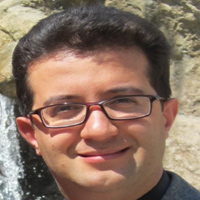Efficiency of optimized artificial neural network in soil organic carbon modeling based on in-situ measurements and Sentinel-2 images in Arasbaran
Soils are the largest carbon pool in terrestrial ecosystems, which account for the greatest amount of the global total terrestrial carbon stocks. Accurate mapping of Soil Organic Carbon (SOC) spatial distribution is a key assumption for soil resource management and environmental protection. The rapid development of remote sensing and application of satellite images provide an excellent opportunity to monitor large-scale SOC storage. Estimating SOC is one of the research topics that artificial neural networks are applied for this purpose in some studies, although parameter optimization is difficult. In previous studies, genetic algorithms have been used to optimize the artificial neural network initial weights and improve the prediction of the output variables. However, the effectiveness of this method in estimating the SOC by remote sensing has been less studied. In this study, the effect of genetic algorithm on artificial neural network training to predict SOC on Sentinel-2 satellite images in Arasbaran vegetation zone was investigated.
For this purpose, soil sampling was performed using stratified sampling method at 46 points at a depth of 0 to 15 cm. SOC was measured by Walky-Black titration method. In order to fit the model between the measured organic carbon in the laboratory, 9 spectral indices and three bands of satellite image, and two methods were used namely, artificial neural network and artificial neural network optimized by genetic algorithm. Cross validation was used to evaluate the models efficiently. Finally, the precision of the obtained models was evaluated with statistical indices of Root Mean Square Error (RMSE), Ratio of Performance to Deviation (RPD), Spearman's correlation coefficient (r), coefficient of determination (R2), and paired sample t-test.
The results showed that the precision of SOC estimated by artificial neural network optimized by genetic algorithm (RMSE = 1.07%, RPD = 1.89%, R2 = 0.76) was higher than artificial neural network results (RMSE =1.51%, RPD = 1.34%, R2 = 0.58). Also Spearman correlation coefficient for SOC estimated with optimized artificial neural network (r = 0.87) was higher compared to estimated SOC with artificial neural network (r = 0.76). Observed SOC was not significantly different from SOC estimated by optimized artificial neural network (p-value=0.21) while it was different from estimated SOC by artificial neural network (p-value=0.02). In addition, the results showed that TSAVI index had the highest Spearman correlation coefficient (0.565), and BI2 index had the lowest Spearman correlation coefficient (0.196) with soil organic carbon.
Generally, it was concluded that the use of genetic algorithm in the selection of artificial neural network parameters improved the performance of this modeling method in estimating soil organic carbon on Sentinel-2 satellite images in the study area. Also the performance of Sentinel-2 satellite images in estimating soil organic carbon in the study area was validated.
-
Comparison of unmanned aerial vehicle (UAV) RGB imagery and point clouds in crown area estimation of individual trees within pine (Pinus eldarica) man-made forests
Ali Hosingholizade, *, Seyed Kazem Alavipanah, Homan Latifi, Yaser Jouybari Moghaddam
Journal of Rs and Gis for natural Resources, -
Species recognition of Pistacia and Amygdalus individuals using combination of UAV-based RGB imagery and digital surface model
Atefeh Esmkhani, *, Ali Darvishi Boloorani, Najmeh Neysani Samany
Wood & Forest Science and Technology,


